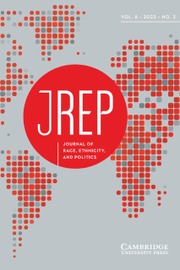No CrossRef data available.
Article contents
Public Resistance to New Houses of Worship
Published online by Cambridge University Press: 18 October 2024
Abstract
How do residents evaluate zoning relief applications for new houses of worship? Do they decide based on the facility’s expected level of nuisance, the religion of the house of worship, or the attitudes of neighbors and local officials? Using a conjoint survey experiment, this paper shows that religion is the most important predictor of resistance. People are more likely to resist new mosques than Christian churches, irrespective of other facility properties. Furthermore, this paper highlights the significant role of partisanship in residents’ evaluation of zoning relief applications. Republican respondents were more likely to reject minority houses of worship and support Christian churches than Democrats, moderating the influence of religion. Such bias has important implications for the zoning relief application process. Local officials should evaluate residents’ opposition differently when the application concerns minority groups.
- Type
- Research Article
- Information
- Copyright
- © The Author(s), 2024. Published by Cambridge University Press on behalf of The Race, Ethnicity, and Politics Section of the American Political Science Association


